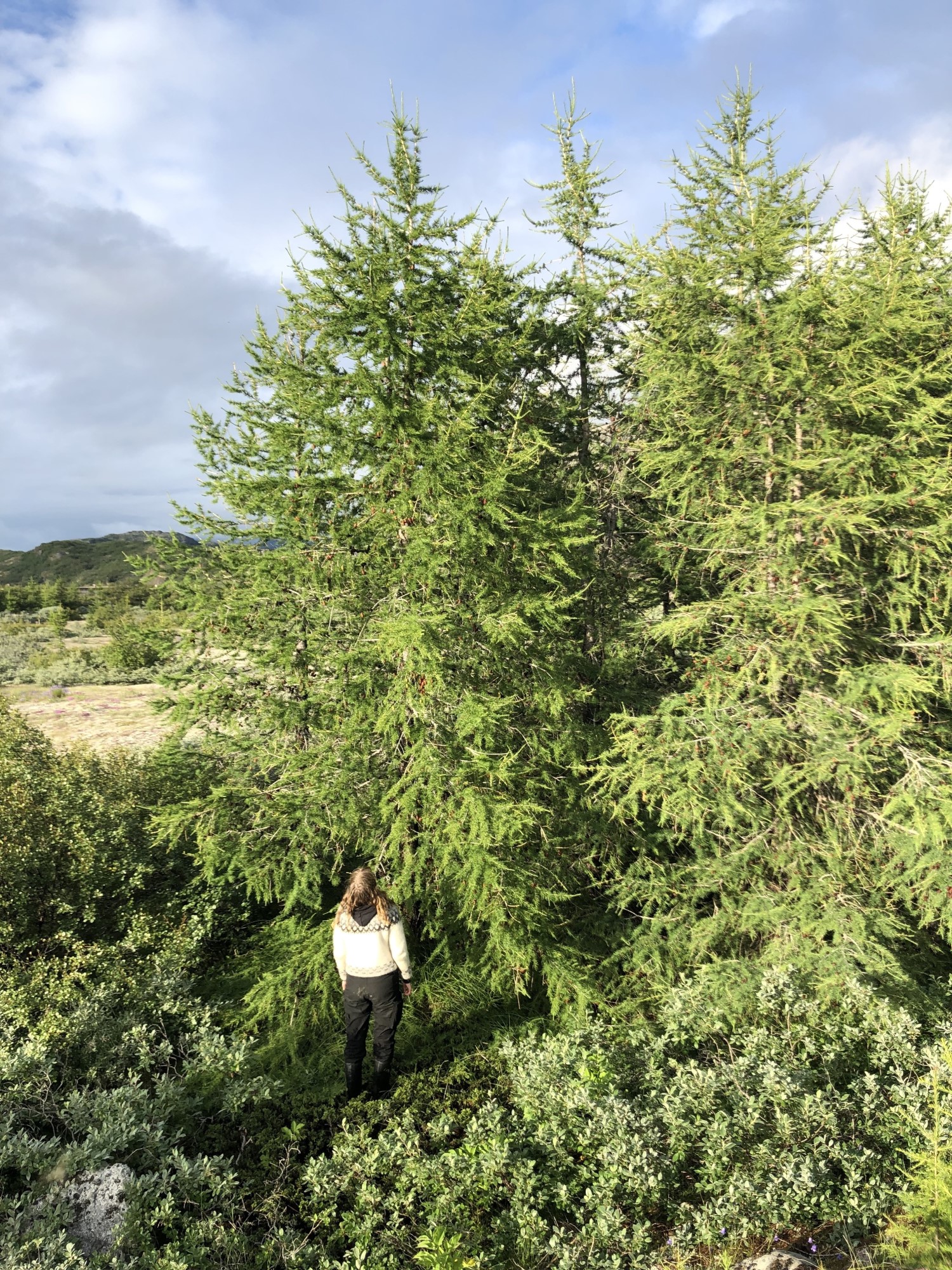
KENNETH HØEGH, 2021
The cold sea around Greenland induces low summer temperatures which limit tree growth. Summers in the inner South Greenland fjord complexes are warmer, and in some places willow scrub can grow up to 3‑5 metres, and birch scrub can grow up to 5‑8 metres in sheltered areas with optimum conditions. Compared to similar areas in North America, however, the number of tree species is modest, the trees are small and forestforming conifers are not present.
Alpine juniper is the only natural conifer in Greenland, and it is likely that the Labrador Sea has prevented the spread of the Northeast American conifer species after the last Ice Age. However, for over 100 years, there has been interest in introducing and planting conifers, especially in South Greenland where, for many years, firewood was harvested from the birch scrub forest in the inner fjords.
As early as 1898, the need for forestry was discussed in order to be able to provide future generations with firewood.
The earliest attempt at introducing new tree species was made by Moravian missionaries, who in 1846 sowed Norway spruce seeds in the inner parts of the Alluitsup Kangerlua fjord (Lichtenau Fjord). The plants are mentioned in 1923 but have since disappeared. Other seedings have also disappeared. One exception is the ‘Rosenvinge Trees’ from 1893 at Qinngua in the fjord Tunulliarfik a little north of Narsarsuaq. Here, three old Scotch pines were measured at 8 metres in 2013.
Thousands of trees were planted under the management of Poul Bjerge from 1953 onwards. A result of this work is the small coniferous forest at Qanasiassat in the Tunulliarfik fjord where some lodgepole pine and Siberian larch trees measured at over 12 metres in 2016.
Since the 1970s, afforestation experiments have also been made further north near Nuuk, in Qooqqut Valley and Ameralla Fjord as well as near Kangerlussuaq. Here, the largest trees measured at 5‑6 metres in 2019.
Today, the largest collection of non-indigenous tree species is found in the Arboretum Groenlandicum/Kalaallit Nunaata Orpiuteqarfia (Greenlandic Arboretum) located at Narsarsuaq. The arboretum was opened in 2004, but the majority of the plantings date from the 1980s and 1990s. During that period under the management of Søren Ødum and Kenneth Høegh, over 100,000 trees were planted spread across more than 100 species. Far from all the species have survived in the local climate, but an astonishing number of species survive, and some grow well and are able to reproduce naturally.
The afforestations at Qanasiassat and Narsarsuaq show that you can grow trees in South Greenland as long as you plant the right species. In recent decades, the trees have grown particularly well, which is partly due to the ongoing climate change. Forecasts show that with the future warmer conditions, the area where boreal forest can grow will increase significantly in size. The considerations from the 1890s regarding forestry in South Greenland have therefore become relevant again.
Further reading
- Agriculture in Greenland
- Biodiversity and nature management
- Horticulture
- Kujataa – farming on the brink of the ice sheet
- Locations with agriculture and sheep farming
- The climate in Greenland
- The ice-free landscapes
- The sea and the fjords
- Towns and settlements
Read more about Nature and landscape in Greenland
